2024 is destined to be extraordinary. After three years of dormancy, Web3 has finally ushered in the beginning of a new bull market cycle. New cycle, new narrative—what fresh blood is pulsating beneath the surface? Let us focus on the Asian financial center, the "heart" of Asian Web3—Hong Kong. Over the past year, regulation, innovation, and capital have surged forward, allowing the entire industry to find a subtle balance between innovation and regulation.
The new narrative is complex, with hotspots emerging one after another. This article will review the top ten buzzwords in Hong Kong's Web3 sector for 2024, offering a glimpse into the industry's rise and development throughout the year.
1. Native Compliance—“No Wild Paths, Just Clear Roads”
In 2024, the world is focusing on Web3 compliance; the era of "regulatory arbitrage" is gone for good.
Unlike the "open first, amend later" approach seen in the U.S. and other regions, Hong Kong has charted a new course of "rules first, innovation follows." From VASP, CBDC, Hong Kong dollar stablecoins, to virtual asset spot ETFs and the Ensemble sandbox program, every piece of legislation and pilot project represents a phased achievement of Hong Kong's regulatory bodies working in collaboration with local financial institutions.
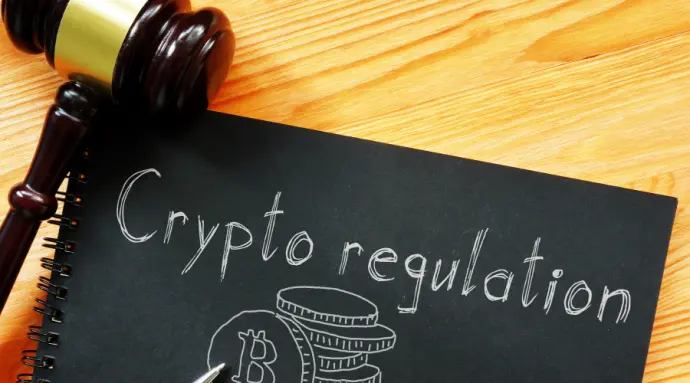
More importantly, Hong Kong's long-cautious regulatory stance has completely "shifted gears" in 2024. Whether it was the Hong Kong Monetary Authority issuing four VASP licenses in one go in December or the global debut of the ETH spot ETF, this "steady yet swift" pace indicates that Hong Kong's regulation has achieved a good balance between caution and openness.
If Web3 is a game, then Hong Kong in 2024 has not only set the upgrade path but also compiled a "newbie guide" for the new players about to enter the arena.
2. BTC Asset Allocation—“Nations and Enterprises Compete to ‘Hoard Coins’”
What virtual asset to invest in for 2024? With a year-on-year increase of 150%, BTC must be one of the answers. In the second half of 2024, the U.S. took the lead in initiating a coin-hoarding competition, with Trump's BTC strategic reserve plan directly upgrading Bitcoin to a "national strategic material," prompting countries like Brazil, Poland, and Japan to follow suit.
Policies have been set, and the capital market quickly followed. Throughout 2024, institutional investors purchased a total of 859,454 BTC, with MicroStrategy leading the way by increasing its long-term BTC holdings by nearly 250,000 coins this year, earning a staggering $20 billion and solidifying its position as a BTC whale.

The world is experiencing a "coin-hoarding wave," and corporate institutions are not falling behind. Hong Kong-listed company Boyaa Interactive (HK.0403) announced it holds 2,641 BTC and 15,445 ETH, quickly converting 14,200 ETH into 515 BTC in a seamless operation; Nano Labs (Nasdaq:NA) partnered with HashKey Exchange to invest $50 million in BTC assets. As of the time of writing, Nano Labs holds BTC worth $5.5 million. The corporate coin-hoarding operation is textbook perfect. Additionally, it is reported that companies like Guofu Innovation and Coolpad Group are quietly following suit, positioning themselves in the Bitcoin reserve battlefield.
3. Virtual Asset Spot ETF—“Old Tools, New Play”
ETFs are already commonplace in traditional financial markets, but when combined with virtual assets, they became the breakthrough tool for the Web3 market in 2024. In January 2024, the U.S. approved the first BTC spot ETF, sparking market excitement. While other countries either remained cautious or began to consider, Hong Kong reacted swiftly, launching not only a BTC spot ETF but also an ETH spot ETF, securing its position in the Asian market.

Currently, the Hong Kong market has three BTC spot ETFs and three ETH spot ETFs, launched by top institutions such as Huaxia, Harvest, and Bosera. According to Coinglass data, as of the time of writing, the total net asset value of Hong Kong's BTC spot ETFs reached $439 million, while the net value of ETH spot ETFs was $63.56 million. Although there is still a gap in scale compared to the U.S., Hong Kong's virtual asset spot ETFs have quickly begun to establish a market presence through innovation and vitality, paving the way for future capital inflows. In July, Hong Kong welcomed Asia's first Bitcoin inverse product—the CSOP Bitcoin Futures Daily (-1x) inverse product; in November, the Hong Kong Stock Exchange launched a series of virtual asset indices, including reference indices and exchange rates for BTC and ETH, bringing more financial tools to the virtual asset market.
Virtual asset spot ETFs not only opened the door to Hong Kong's traditional financial market but also marked the starting point for the capital surge in Hong Kong's Web3.
4. Stablecoins—“The Top Player in Cross-Border Payments, the ‘Pet’ of Regulation”
Mainstream stablecoins like USDT and USDC, with their 1:1 peg to the U.S. dollar, have long been the top players in the cross-border payment field. Whether for crypto trading, salary settlements, or product payments, stablecoins are ubiquitous. However, "fame brings controversy," and multiple de-pegging risks have made them a focal point for global regulatory scrutiny.
In June 2024, the EU's "Stablecoin Act" came into effect, instantly opening the floodgates for global regulation. Hong Kong took the lead, launching a full-scale effort at the beginning of the year: issuing regulatory consultations for fiat stablecoins in February, launching a "stablecoin sandbox" program in March, releasing consultation summaries in July, and directly presenting the "Stablecoin Act" in December… The Legislative Council's KPIs are clearly laid out.

Interestingly, the first batch of sandbox players includes well-known companies such as JD Coin Chain Technology, Yuan Coin Innovation Technology, Standard Chartered Bank (Hong Kong), Animoca Brands, and Hong Kong Telecommunications (HKT), instantly turning the stablecoin sandbox into a "top-tier club."
Currently, Hong Kong's regulatory focus is temporarily on Hong Kong dollar stablecoins, but this wave of operations has stabilized the market and elevated Hong Kong's digital asset regulations. As for whether Hong Kong will consider allowing the globally popular USDT, USDC, and other U.S. dollar stablecoins, the story is still unfolding.
5. VASP Licenses—“Only with a License Can You Open for Business”
To navigate the virtual asset trading market, a VASP (Virtual Asset Service Provider) license is the "entry ticket." With the U.S. and Singapore leading the way, followed by Dubai and the EU, holding a license has become the mainstream trend. As an Asian financial center, Hong Kong's VASP licenses are also ready.
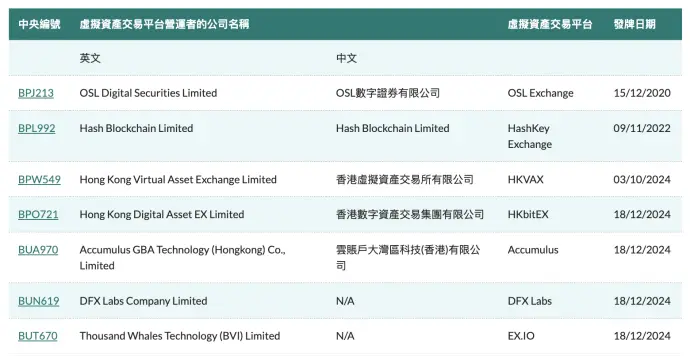
Currently, the number of licensed platforms in Hong Kong has grown to seven, including HashKey Exchange, OSL Exchange, HKVAX, HKbitEX, Accumulus, DFXLabs, and EX.IO. These "good students" not only strictly comply with the Anti-Money Laundering Ordinance (AMLO) but have also passed multiple layers of scrutiny from the Hong Kong Securities and Futures Commission (SFC).
Efforts yield rewards, and being licensed is more favored by the market. For example, HashKey Exchange saw its overall platform assets exceed HKD 10 billion in 2024, with a cumulative trading volume of HKD 580 billion, ranking among the top 10 centralized exchanges globally. Although more platforms are still awaiting review, the Hong Kong SFC has established a clear licensing procedure roadmap. By 2025, it is believed that more platforms will enter the market with licenses.
6. PayFi—“Is It Old Wine in New Bottles, or a New Round of Payment Revolution?”
In 2024, PayFi (Payment Finance) became a new favorite in the Web3 circle. It may seem like just moving payments onto the blockchain, but in reality, PayFi significantly enhances the efficiency of cross-border payments, instantly upgrading traditional "slow remittances" to "instant arrivals."
If there is a widely recognized and enduring mainstream narrative in the Web3 industry, it is undoubtedly the key proposition of mass adoption. **PayFi is an important practitioner of this narrative. Broadly speaking, PayFi belongs to the RWA (Real World Assets) track, but its ambitions go far beyond that. Behind it lies the blockchain's leverage over vast amounts of real-world assets—just in the payment sector, the total scale of segmented markets like credit cards, trade financing, and cross-border payments exceeds **$40 trillion, while PayFi is currently only targeting the "long tail market" of traditional finance, presenting enormous potential.
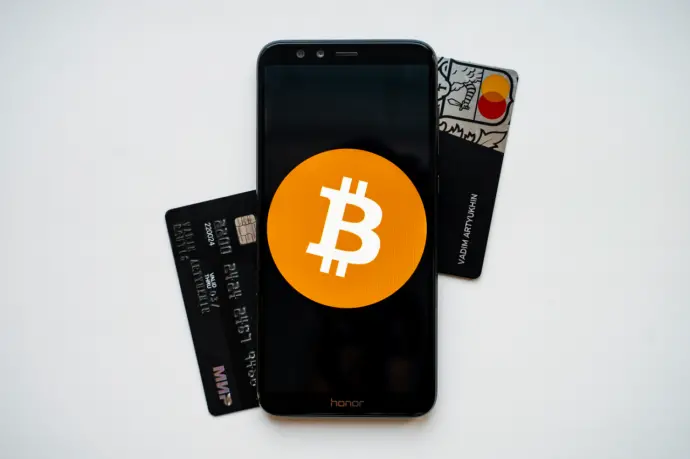
The core value of PayFi lies in connecting blockchain capital pools with off-chain financial needs. This connection is not easy and requires the integration of multiple forces: first, it must operate in a relatively relaxed regulatory environment and a crypto-friendly city; second, there are not many institutions with the financial strength to provide comprehensive compliance support from infrastructure to KYC, deposit and withdrawal, and liquidity management—only a few licensed regulatory institutions possess this capability, such as Hong Kong's largest licensed virtual asset exchange, HashKey Exchange.
Hong Kong may become the "financial hotbed" for PayFi. As one of the global financial centers, Hong Kong has a huge demand for cross-border capital, mature financial infrastructure, and supportive policies like the "Ensemble" plan and stablecoin regulation. The red carpet for the industry to land in Hong Kong continues to be laid out.
7. Traditional Institutions Rush In—“Old Money Becomes New Nobility”
Although the virtual asset spot ETF has provided a pathway for traditional capital to enter Web3, indirect investment cannot compare to the direct profits of "smelling good." Watching the early crypto bull market, traditional financial giants in the U.S. made a fortune by issuing BTC spot ETFs. In contrast, Hong Kong's brokerages, despite having millions of users, are still clinging to a stock market that resembles a cold winter—with over 10,000 Hong Kong stocks having a daily trading volume of less than HKD 10,000.
With a new perspective, why not involve users in Web3? Thus, traditional brokerages in Hong Kong have finally "rushed in." Traditional brokerages like Victory Securities and Adept Securities, as well as internet brokerages like Futu and Tiger Brokers, and even foreign giants like Interactive Brokers, have all obtained the Type 1 license upgrade from the Hong Kong SFC, quickly laying out their virtual asset business. To "avoid detours," they chose to partner with the local licensed exchange HashKey Exchange, integrating HashKey Pro, an institutional-level comprehensive service, and rapidly enabling deposit, withdrawal, and trading functions for virtual assets like BTC and ETH. In just a few months, they have driven HKD 5 billion in trading volume.
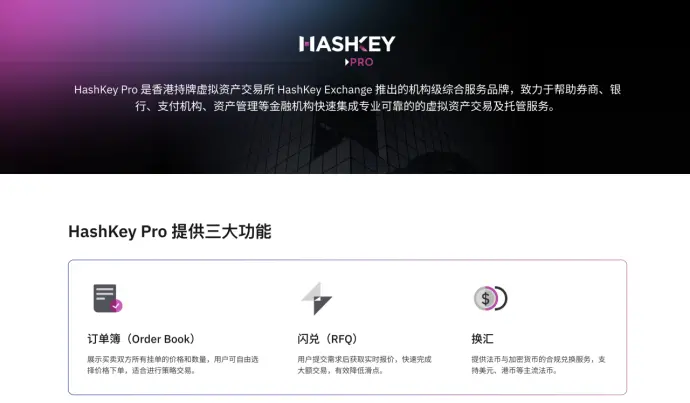
The entry of brokerages has not only brought traffic but also their professional advantages into Web3—risk control, compliance, and established customer relationships are all pulling traditional stock investors into the world of virtual assets in no time. What is most exciting is that if the Web3 market further breaks through in 2025, leveraging their inherent advantages, Hong Kong's brokerages may even bring global "old money" into the arena, fully linking traditional finance with the virtual asset market.
8. OTC Regulation—A $10 Billion Market May Face “Tightening”
“Deposit and withdrawal, go to Hong Kong,” with hundreds of offline conversion shops attracting more people. Especially for institutions and high-net-worth users with transaction volumes often exceeding millions, OTC trading is not only flexible but also offers higher privacy and liquidity. As a result, Hong Kong's OTC market has always been vibrant. Statistics show that there are about 200 offline OTC trading shops and 250 active online service providers in Hong Kong, with an annual trading volume reaching nearly $10 billion.

However, beneath the prosperity lies a current of unease. In recent years, multiple OTC robbery incidents and the false advertising by OTC promoters during the JPEX incident have revealed the compliance shortcomings and potential money laundering risks in the OTC market. In response, the Hong Kong government quickly moved to "catch up," releasing the "Regulatory Proposals for Virtual Asset OTC Trading" in February, planning to impose a "tightening" on the OTC market. According to the latest news, the regulatory plan will undergo consultation and legislation in 2025/2026, with customs and the Securities and Futures Commission closely collaborating on the project.
Industry opinions are polarized—some worry that short-term regulation will cool the market, while others are optimistic about the long-term trust dividends brought by regulation. After all, without a "license," the market is merely "free-range"; with regulation, Hong Kong's OTC market can grow from a "wild kingdom" into a compliant center of global capital trust, welcoming greater growth.
9. Running Events—“A National Fitness Project”
Running events have always been a "national sport" in Web3, and Hong Kong has become the hub for this year's activities. In 2024 alone, there will be no less than 50 medium to large-scale events in Hong Kong, covering topics from virtual asset regulatory discussions to practical applications of blockchain technology, from code surfing by tech geeks to strategic dialogues among business leaders, with Web3 themes encompassing a wide range.
Major summits such as WOW Summit, FORESIGHT 2024, Hong Kong Web3 Carnival, and FinTech Week, as well as technical forums like Solana Hacker House HK and HashKey Hackerhouse, not to mention numerous small salons and cocktail parties… The most typical is the Hong Kong Web3 Carnival. The event venue spans nearly 9,000 square meters and lasts for four days. In addition to the main venue, nearly 200 surrounding activities were held nearby. Rough estimates suggest that over 50,000 people participated offline, attracting more than 300 globally renowned speakers and over 100 popular projects to exhibit. In February next year, Consensus will be held in Hong Kong for the first time, followed by the Web3 Carnival at the end of April.
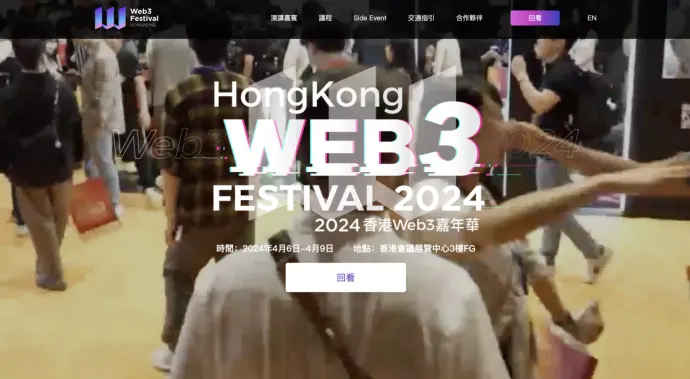
The industry is bustling, and running events are unceasing; 2025 will continue to be vibrant.
10. Front Store and Back Factory—“A Deep-Hong Kong Combination, A New Landscape for Web3”
In 2024, the stage for the Chinese Web3 center has shifted from former hubs like Shanghai and Hangzhou to Hong Kong. The "front store and back factory" model is a unique collaboration between Hong Kong and Shenzhen. This combination not only showcases industry advantages but also creates a distinctive approach exclusive to the Greater Bay Area.
The "front store" is Hong Kong's strong suit. As one of the world's leading international financial centers, Hong Kong boasts an efficient capital market, an open business environment, and continuously improving virtual asset regulatory policies. From ongoing international industry activities to localized and clear policy guidance, along with strong policy support such as the HKD 10 billion Innovation and Technology Fund and special visa programs, as well as a favorable financing environment. For Web3 companies, establishing a presence in Hong Kong means standing at the center of the global market.

The "back factory" in Shenzhen offers powerful R&D capabilities, a complete industrial chain, and extreme cost control, providing an ideal environment for the incubation of Web3 projects. Therefore, many Hong Kong Web3 companies prefer to deploy their technical teams in Shenzhen for blockchain underlying technology development, hardware production, and some operational processes, allowing for rapid trial and error and quick implementation. In 2024, Hong Kong's Cyberport also strengthened cooperation with several technology parks in Shenzhen, facilitating smoother resource flow between the two regions.
This "front store and back factory" model has formed a "brand + technology" closed loop, helping Web3 companies unleash tremendous potential and enter the global market. In 2025, Hong Kong is worth looking forward to.
免责声明:本文章仅代表作者个人观点,不代表本平台的立场和观点。本文章仅供信息分享,不构成对任何人的任何投资建议。用户与作者之间的任何争议,与本平台无关。如网页中刊载的文章或图片涉及侵权,请提供相关的权利证明和身份证明发送邮件到support@aicoin.com,本平台相关工作人员将会进行核查。




